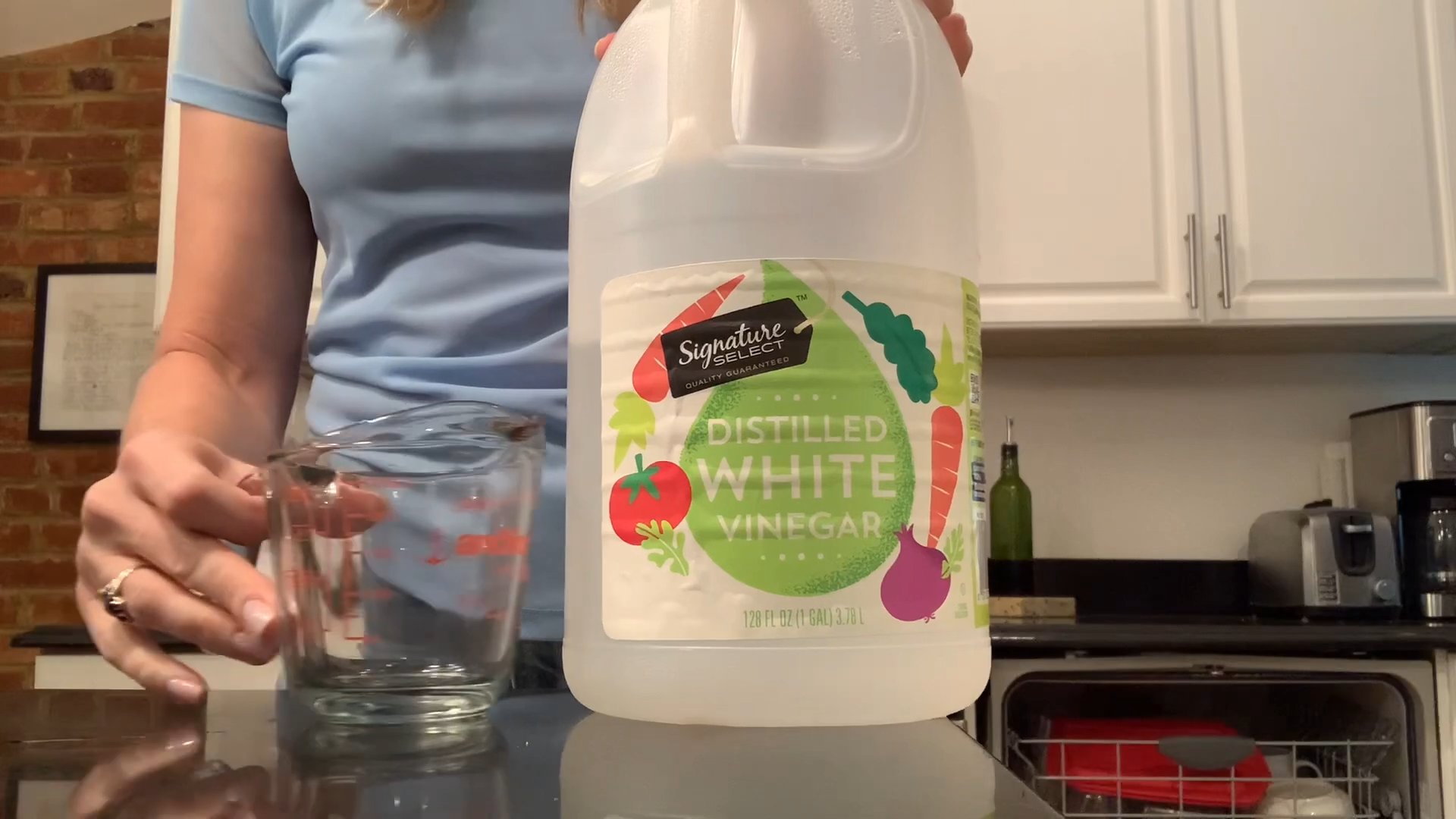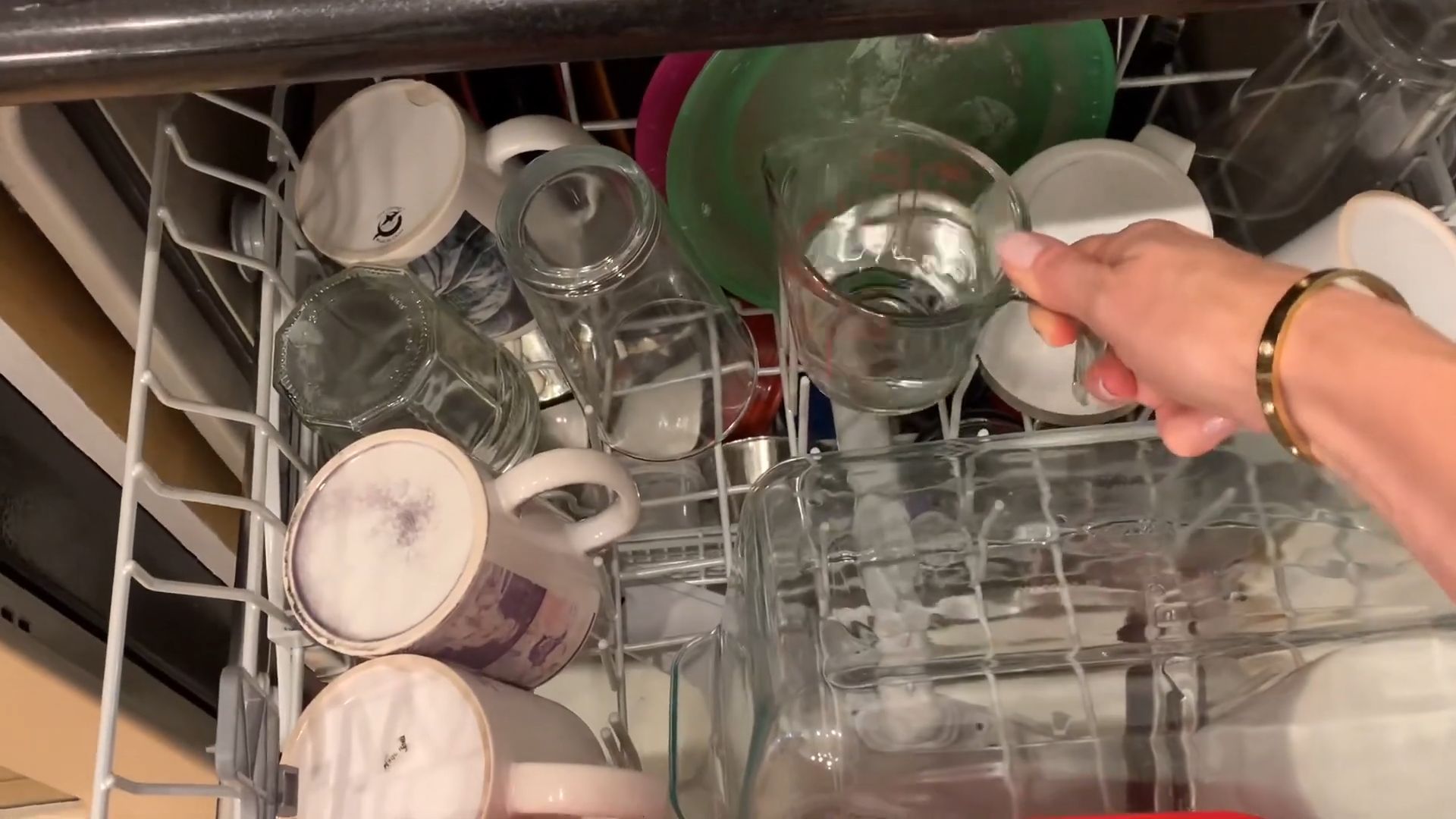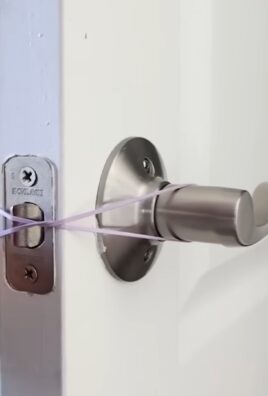DIY White Vinegar Recipes: Unlock the surprising power of this pantry staple and transform your home and garden! Have you ever looked at that bottle of white vinegar and thought, “There has to be more to this than just salad dressing?” Well, you’re absolutely right! For generations, white vinegar has been a secret weapon for savvy homeowners, offering a natural, effective, and budget-friendly alternative to harsh chemicals.
From ancient civilizations using vinegar for cleaning and preserving food to modern-day eco-conscious individuals seeking sustainable solutions, the versatility of white vinegar is undeniable. But why should you care about DIY white vinegar recipes? Because they can save you money, reduce your exposure to harmful chemicals, and empower you to create a healthier, happier home.
I’m going to show you how to harness the cleaning, deodorizing, and even gardening prowess of this humble liquid. Forget expensive, store-bought cleaners filled with questionable ingredients. With a few simple DIY white vinegar recipes, you can tackle everything from stubborn stains to pesky weeds, all while knowing exactly what you’re using and protecting the environment. Let’s dive in and discover the amazing potential of DIY white vinegar recipes together!

DIY Cleaning Powerhouse: Unleashing the Magic of White Vinegar
Hey there, fellow DIY enthusiasts! I’m so excited to share some of my favorite ways to use white vinegar for cleaning. Seriously, this stuff is a game-changer. It’s cheap, effective, and a natural alternative to harsh chemicals. Let’s dive into how you can harness the cleaning power of white vinegar!
General Guidelines for Using White Vinegar
Before we jump into specific recipes, let’s cover some ground rules:
* Always use distilled white vinegar: This is the standard type for cleaning and is readily available at any grocery store.
* Dilution is key: Vinegar is acidic, so diluting it with water is often necessary to prevent damage to surfaces. I’ll specify the ratios in each recipe.
* Test in an inconspicuous area: Before applying any vinegar solution to a large surface, test it on a small, hidden spot to ensure it doesn’t cause discoloration or damage.
* Avoid certain surfaces: Don’t use vinegar on marble, granite, waxed wood, aluminum, cast iron, or electronics screens. The acidity can damage these materials.
* Ventilation is important: While vinegar is natural, it does have a strong odor. Make sure to open windows or turn on a fan when cleaning with vinegar.
* Storage: Store your vinegar cleaning solutions in labeled spray bottles or containers. This will prevent accidental misuse.
All-Purpose Cleaner
This is my go-to cleaner for everyday messes. It’s perfect for countertops, sinks, and other surfaces.
What you’ll need:
* Spray bottle
* 1 part white vinegar
* 1 part water
* Optional: A few drops of your favorite essential oil (lemon, lavender, or tea tree are great choices)
Instructions:
1. Combine the ingredients: In your spray bottle, mix equal parts white vinegar and water.
2. Add essential oils (optional): If you want to add a pleasant scent, add a few drops of your favorite essential oil. I usually go for about 5-10 drops.
3. Shake well: Make sure everything is mixed thoroughly.
4. Spray and wipe: Spray the solution onto the surface you want to clean and wipe it down with a clean cloth or sponge.
Glass and Window Cleaner
Say goodbye to streaks with this simple vinegar-based glass cleaner!
What you’ll need:
* Spray bottle
* 1 part white vinegar
* 10 parts water
* Microfiber cloth
Instructions:
1. Mix the solution: In your spray bottle, combine 1 part white vinegar with 10 parts water.
2. Spray the glass: Lightly spray the solution onto the glass or window.
3. Wipe with a microfiber cloth: Use a clean, dry microfiber cloth to wipe the glass. The microfiber cloth will help prevent streaks.
4. Buff dry: If necessary, buff the glass with a dry microfiber cloth to remove any remaining streaks.
Microwave Cleaner
Cleaning the microwave can be a pain, but this vinegar trick makes it super easy!
What you’ll need:
* Microwave-safe bowl
* 1/2 cup white vinegar
* 1/2 cup water
Instructions:
1. Combine vinegar and water: In the microwave-safe bowl, mix the white vinegar and water.
2. Microwave for 5 minutes: Place the bowl in the microwave and heat on high for 5 minutes. The steam will loosen the grime.
3. Let it sit for 5 minutes: Leave the microwave door closed for another 5 minutes to allow the steam to continue working.
4. Wipe clean: Carefully remove the bowl (it will be hot!) and wipe down the inside of the microwave with a clean cloth or sponge. The grime should wipe away easily.
Coffee Maker Cleaner
Keep your coffee maker running smoothly with this simple vinegar cleaning method.
What you’ll need:
* White vinegar
* Water
Instructions:
1. Fill the water reservoir: Fill the coffee maker’s water reservoir with equal parts white vinegar and water.
2. Run a brewing cycle: Start a brewing cycle as you normally would.
3. Repeat with fresh water: After the vinegar solution has run through, fill the reservoir with fresh water and run two more brewing cycles to rinse out any remaining vinegar.
Shower Head Cleaner
Hard water deposits can clog your shower head and reduce water pressure. This vinegar soak will dissolve those deposits.
What you’ll need:
* Plastic bag (gallon-sized)
* White vinegar
* Rubber band or twist tie
Instructions:
1. Fill the bag with vinegar: Pour enough white vinegar into the plastic bag to completely submerge the shower head.
2. Attach the bag to the shower head: Secure the bag around the shower head with a rubber band or twist tie. Make sure the shower head is fully submerged in the vinegar.
3. Soak overnight: Let the shower head soak in the vinegar overnight.
4. Remove and rinse: Remove the bag and rinse the shower head thoroughly with water.
5. Wipe clean: Wipe the shower head with a clean cloth.
Drain Cleaner
Vinegar and baking soda create a fizzing action that can help clear clogged drains.
What you’ll need:
* 1 cup baking soda
* 2 cups white vinegar
* Hot water
Instructions:
1. Pour baking soda down the drain: Pour 1 cup of baking soda down the clogged drain.
2. Pour vinegar down the drain: Immediately follow with 2 cups of white vinegar.
3. Let it fizz: Let the mixture fizz and bubble for about 30 minutes.
4. Flush with hot water: After 30 minutes, flush the drain with hot water for several minutes.
5. Repeat if necessary: If the drain is still clogged, repeat the process.
Laundry Booster and Fabric Softener
Vinegar can be used as a natural laundry booster and fabric softener.
What you’ll need:
* White vinegar
Instructions:
1. Add to the wash: Add 1/2 cup of white vinegar to the washing machine during the rinse cycle.
2. Enjoy softer clothes: Your clothes will be softer and fresher, and the vinegar will help remove any lingering detergent residue. Don’t worry, your clothes won’t smell like vinegar! The smell dissipates as they dry.
Weed Killer
Vinegar can be used to kill weeds naturally.
What you’ll need:
* Spray bottle
* White vinegar
* Optional: 1 tablespoon salt
* Optional: 1 teaspoon dish soap
Instructions:
1. Combine ingredients: In a spray bottle, pour undiluted white vinegar. For extra strength, add 1 tablespoon of salt and 1 teaspoon of dish soap. The salt helps to dehydrate the weeds, and the dish soap helps the solution stick to the leaves.
2. Spray the weeds: Spray the vinegar solution directly onto the weeds, being careful to avoid spraying desirable plants.
3. Repeat as needed: Repeat the application as needed, especially after rain.
Toilet Bowl Cleaner
Vinegar can help clean and deodorize your toilet bowl.
What you’ll need:
* White vinegar
Instructions:
1. Pour vinegar into the bowl: Pour 1-2 cups of white vinegar into the toilet bowl.
2. Let it sit: Let the vinegar sit for at least 30 minutes, or even overnight for tougher stains.
3. Scrub and flush: Scrub the bowl with a toilet brush and then flush.
Rust Remover
Vinegar’s acidity can help dissolve rust.
What you’ll need:
* White vinegar
* Container (if soaking)
* Cloth or brush (if scrubbing)
Instructions:
1. Soak or scrub: For small, removable items, soak them in white vinegar for several hours or overnight. For larger items, apply vinegar to the rusted area with a cloth or brush.
2. Scrub the rust: After soaking, scrub the rust with a brush or scouring pad.
3. Rinse and dry: Rinse the item with water and dry it thoroughly.
Cutting Board Sanitizer
Keep your cutting boards clean and sanitized with vinegar.
What you’ll need:
* White vinegar
Instructions:
1. Wipe with vinegar: After washing your cutting board with soap and water, wipe it down with white vinegar.
2. Let it air dry:

Conclusion
So, there you have it! A treasure trove of DIY white vinegar recipes that are not only incredibly effective but also surprisingly simple and budget-friendly. We’ve explored how this humble household staple can transform your cleaning routine, elevate your beauty regimen, and even enhance your culinary creations. From sparkling clean surfaces to radiant hair and flavorful dishes, the possibilities are truly endless.
Why is this DIY approach a must-try? Because it empowers you to take control of the ingredients you use in your home and on your body. You’re ditching harsh chemicals and embracing a natural, sustainable alternative that’s gentle on the environment and your wallet. Plus, the satisfaction of creating something yourself is an added bonus!
Consider these suggestions and variations to personalize your DIY white vinegar recipes:
* **Infused Cleaning Vinegar:** Add citrus peels (lemon, orange, grapefruit) to your vinegar for a refreshing scent and extra cleaning power. Let it steep for a few weeks before straining and using.
* **Herbal Hair Rinse:** Infuse your vinegar with herbs like rosemary, lavender, or chamomile for added benefits like shine, scalp health, and a pleasant aroma.
* **Spiced Pickling Vinegar:** Experiment with different spices like peppercorns, mustard seeds, cloves, and bay leaves to create unique and flavorful pickling brines.
* **Vinegar as a Tenderizer:** Marinate tough cuts of meat in a vinegar-based marinade to break down the fibers and create a more tender and flavorful result.
* **Vinegar Foot Soak:** Add a cup of white vinegar to a warm foot bath to help soften calluses, combat foot odor, and soothe tired feet. You can add essential oils like tea tree or eucalyptus for added benefits.
We’ve only scratched the surface of what’s possible with DIY white vinegar recipes. The key is to experiment, adapt, and discover what works best for you and your needs. Don’t be afraid to get creative and explore the endless potential of this versatile ingredient.
We wholeheartedly encourage you to try these DIY white vinegar recipes and experience the difference for yourself. Whether you’re tackling tough stains, revitalizing your hair, or adding a tangy twist to your favorite dishes, we’re confident that you’ll be amazed by the results.
But don’t just take our word for it! We want to hear about your experiences. Share your successes, your challenges, and your own unique DIY white vinegar recipes in the comments below. Let’s build a community of DIY enthusiasts who are passionate about natural, effective, and affordable solutions. Your insights could inspire others to embrace the power of **DIY white vinegar recipes** and transform their lives for the better. So, go ahead, give it a try, and let us know what you think! We can’t wait to hear from you.
Frequently Asked Questions (FAQ)
What exactly is white vinegar, and is it safe to use?
White vinegar is a solution of acetic acid and water. The acetic acid concentration typically ranges from 5% to 8%. It’s generally considered safe for household cleaning, beauty applications, and cooking when used properly and diluted as directed in recipes. However, it’s crucial to avoid contact with eyes and to keep it out of reach of children. Never mix vinegar with bleach, as this can create toxic chlorine gas. Always test a small, inconspicuous area before applying vinegar to a larger surface, especially delicate materials.
Can I use any type of vinegar for these DIY recipes?
While other types of vinegar, such as apple cider vinegar or balsamic vinegar, have their own unique properties and uses, white vinegar is generally preferred for cleaning and many other DIY applications due to its higher acidity and lack of color. The color of other vinegars can stain some surfaces. For cooking, the recipe will specify the type of vinegar needed for the desired flavor profile. For cleaning, stick to distilled white vinegar for the best and most predictable results.
How do I store my DIY white vinegar solutions?
Store your DIY white vinegar solutions in clean, airtight containers, preferably glass or BPA-free plastic. Label each container clearly with the contents and the date it was made. Keep them in a cool, dark place away from direct sunlight and heat. Most DIY white vinegar solutions will last for several months, but it’s always a good idea to check for any signs of spoilage, such as discoloration or a foul odor, before using them.
Are there any surfaces or materials I should avoid using white vinegar on?
Yes, there are certain surfaces and materials that can be damaged by white vinegar. Avoid using it on natural stone surfaces like marble, granite, and limestone, as the acidity can etch and dull the finish. Also, avoid using it on waxed furniture, as it can strip the wax. It’s also not recommended for use on electronics screens, as it can damage the coating. When in doubt, always test a small, inconspicuous area first.
Can I use essential oils in my DIY white vinegar cleaning solutions?
Absolutely! Essential oils can add a pleasant scent and enhance the cleaning power of your DIY white vinegar solutions. Some popular choices for cleaning include lemon, tea tree, eucalyptus, lavender, and peppermint. However, it’s important to note that essential oils are not water-soluble, so they won’t mix evenly with vinegar. To help them disperse, you can add a small amount of solubilizer, such as Polysorbate 20, or shake the solution well before each use.
I have sensitive skin. Are these DIY white vinegar recipes safe for me?
While white vinegar is generally considered safe, it can be irritating to sensitive skin. If you have sensitive skin, it’s important to dilute the vinegar further than recommended in the recipes. You can also wear gloves when handling vinegar solutions. If you experience any irritation, discontinue use immediately and consult a dermatologist. You can also try using gentler alternatives, such as baking soda or castile soap.
Can I use DIY white vinegar solutions to clean my pet’s belongings?
Yes, DIY white vinegar solutions can be used to clean your pet’s belongings, such as food bowls, water bowls, and toys. However, it’s important to rinse them thoroughly with water after cleaning to remove any residual vinegar, as some pets may be sensitive to the smell or taste. Avoid using vinegar on porous materials like wood or fabric that your pet might chew on, as it can be difficult to remove the vinegar completely.
How can I neutralize the strong smell of vinegar after cleaning?
The strong smell of vinegar can be off-putting to some people. Fortunately, it dissipates quickly. To help neutralize the odor, you can open windows and ventilate the area well. You can also add a few drops of your favorite essential oil to the cleaning solution or diffuse essential oils in the room after cleaning. Another option is to place a bowl of baking soda in the room to absorb odors.
What are some other creative uses for DIY white vinegar recipes?
Beyond cleaning, beauty, and cooking, DIY white vinegar recipes can be used for a variety of other creative purposes. For example, you can use it to remove hard water stains from showerheads and faucets, unclog drains, remove stickers and adhesive residue, and even deter ants and other pests. The possibilities are truly endless!
Where can I find more information and inspiration for DIY white vinegar recipes?
There are many resources available online and in libraries that offer more information and inspiration for DIY white vinegar recipes. You can search for blogs, websites, and books dedicated to natural cleaning, DIY beauty, and sustainable living. You can also find inspiration on social media platforms like Pinterest and Instagram. Don’t be afraid to experiment and adapt recipes to suit your own needs and preferences. Remember to always prioritize safety and use common sense when working with vinegar and other ingredients.




Leave a Comment